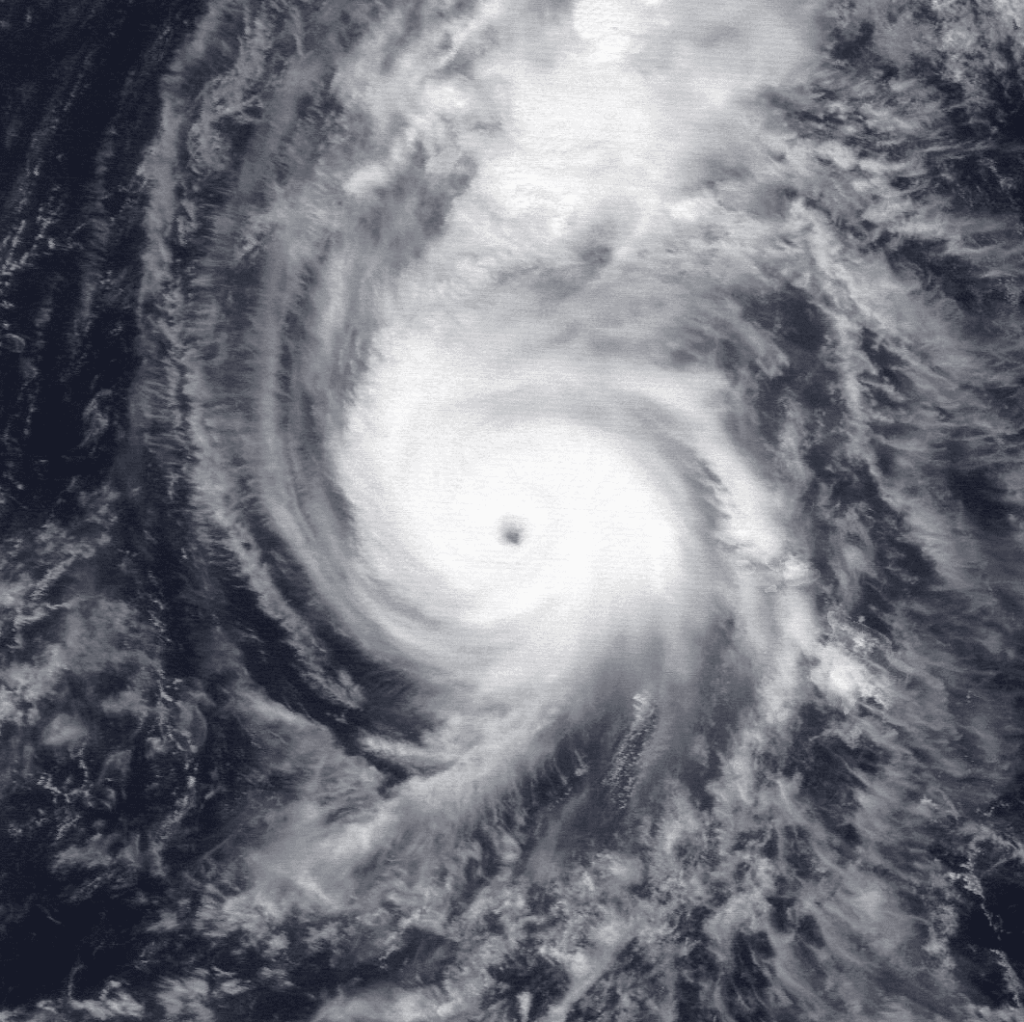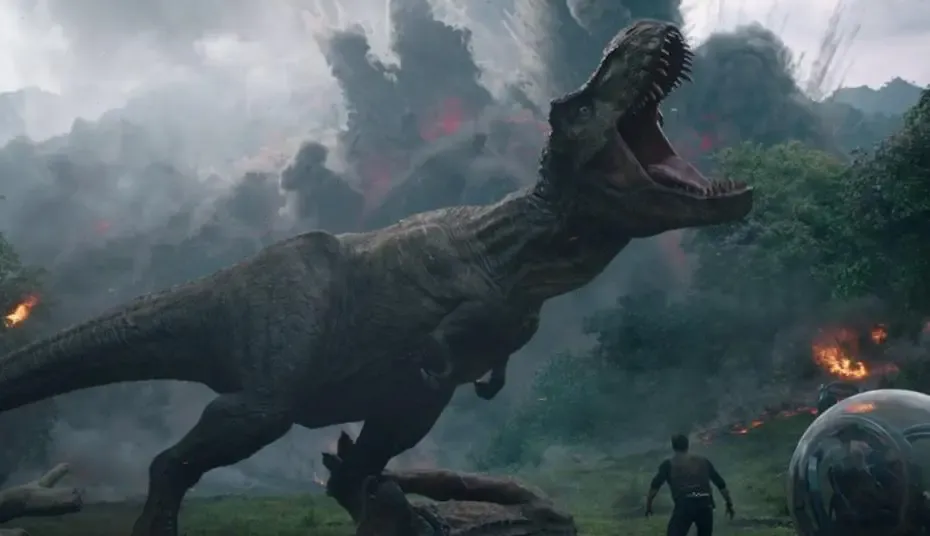Jurassic Park, a 1993 dinosaur adventure film directed by Steven Spielberg, is based on a novel by Michael Crichton on the same name. The multi-billionaire zoo of a fiction world is depicted in the film as being located on Isla Nublar, a small island off the coast of Costa Rica.
It was Kauai, the smallest island in Hawaii, as well as the nearby island of Oahu that served as the primary location i.e Isla Nublar for the imaginary island (Site B Isla Sorna is also an imaginary island).
Following the 1997 sequel “Forgotten World” and the 2001 sequel “Jurassic Park III,” the most current films are “Jurassic World” and “Jurassic World II: The Fallen Kingdom.”
Located on the brink of the Blue Hole on Kauai, a water-filled canyon that can only be accessed after a 5-hour climb from Wailua, the massive Jurassic Park gates were a sight to behold. Near the southern part of the island, in Olokele Canyon, a massive electric fence was constructed, which serves as a delineation between the enclosure of the dangerous velociraptors shown in the film.

The waterfall where John Hammond’s chopper lands can’t be accessed by foot or by other means of transportation. The landing platform, which was constructed just for the film and is located near the Manawaiopuna Falls in the Hanapepe Valley, was constructed specifically for the film.
If you wish to ever visit the place, some of the helicopter rides available on the island make a pit stop in this location. In the event that you do not wish to spend as much money, you may alternatively arrange a regular helicopter trip that does not include a stop at the waterfall. This is unquestionably worthwhile.
Some of the other filming sites include Costa Rica, the Dominican Republic, the Hawaiian island of Oahu, and Kauai, which was destroyed by Hurricane Inki nearer to the conclusion of the shoot, as well as the Hawaiian island of Oahu.
Doctor Alan Grant (Sam Neill) and Hammond’s children sought sanctuary beneath this tree. As well as being in the opening sequence of Roland Emmerich’s “ Godzilla,” the valley may be seen in other films (1998).

The archaeological dig site for the film was also filmed in California, in Red Rock Canyon State Park, which served as the backdrop for the production. A second set of recordings was recorded in the Tehachapi Pass in the Mojave Desert.

The mythical Isla Sorna, which is located around 90 miles from the fictional Isla Nublar, is shown as Kauai’s NaPali Coastline in 1997’s Lost World. Kipu Kai, one of Kauai’s beaches, appears in Lost World and can be seen when the Bowmans are dining on the beach. The beach, which is located on Kauai’s southeastern coast near Moleuhu, is difficult to get and can only be visited by boat.
The climactic rescue sequence in Jurassic Park III was filmed on Kauai’s Pilaa Beach.This difficult-to-reach beach is rarely visited and is not suitable for swimming. Other sequences from Jurassic Park III were shot at the Jurassic Kahili Ranch, which is now privately owned. There are no tours offered, and trespassing is strictly prohibited if you wish to visit the place.

The helicopter entry scene for Jurassic World (2015) was filmed on the north coast of Maui, near the Garden of Eden Arboretum. The site where Owen, Claire, and Franklin wash ashore after fleeing a volcanic eruption and dinosaur rampage, is Halona Beach, in the most recent addition of the series, Jurassic World: Fallen Kingdom.
Warner Brothers Burbank Studios in Burbank and Universal Studios in Los Angeles were used to shoot the interiors for the film. One of the most famous attractions at the latter is the prehistoric white water ride “ Jurassic Park – The Ride,” which is themed after the movie Jurassic Park. The highlight is a 25-meter drop in the raft, during which you will get thoroughly soaked.
On top of that, several of the sets and artifacts from the films may still be seen on the studio tour at Universal Studios where Jurassic Park was filmed.
Other Interesting Facts about Jurassic Park Movie
1. Spielberg became acquainted with the film Jurassic Park very before!

After meeting with writer Michael Crichton while working on a script, Spielberg enquired about the novelist’s future book intentions. Jurassic Park was initially mentioned to Spielberg by author Michael Crichton in May 1990, before the book had even been published. Spielberg was immediately interested. Despite the fact that a script had not yet been written, he began storyboarding passages from the novel due to his intense interest in it.
2. Spielberg and his obsession with dinosaurs

The velociraptors were supposed to be roughly ten feet tall, which was a bit taller than they were supposed to be. Spielberg requested this adjustment because he was displeased with the size of Deinonychus, the largest dromaeosaurid at the time, and wanted it to be larger, according to a pre-production artist. Another motive was to increase the raptor’s ferocity. Paleontologists discovered ten-foot-tall specimens of raptors known as Utahraptors during filming. Spielberg also wanted the dinosaurs to have a birdlike appearance. He wanted the Raptors to turn their necks to look behind them, giving them a more frightening image.
- Also Read- How to Change Aspect Ratio in Davinci Resolve ( Best Explained)
- Also Read- RAW, UNCOMPRESSED, AND LOG VIDEO: DIFFERENCE EXPLAINED
- Also Read- What is a Prequel to a Film? How to Write Prequels? Explained with Examples!
3. Jurassic Park broke new ground in the field of computer-generated imagery.

Spielberg was dissatisfied with the general appearance of the dinosaur test photos because they were not lifelike enough. The result was a bunch of Gallimimus Dinosaur skeletons rushing across a field, created by Muren and his ILM team, who were inspired by their pioneering experience in developing and inserting entirely computer-generated creatures into films such as The Abyss and Terminator 2: Judgment Day, to present to Spielberg. Spielberg was awestruck by the fluidity and accuracy of the effects, but he was concerned that they might not hold up under close examination—and he didn’t want to completely abandon Tippett’s practical animation abilities.
As a result, the director pushed Muren and ILM to go even farther with the project. When the filmmaker saw a computer-generated test scene depicting a fully drawn T. rex roaming through a field in broad daylight, he decided to employ only computer-generated imagery in some sections.
4. Steven Spielberg oversaw the post-production of this movie via video link
While filming the Holocaust movie Schindler’s List in Poland, director Steven Spielberg monitored the post-production of this film via video link (1993). He later described it as one of the most difficult periods of his career as a filmmaker, and it had taken such a psychological burden on him that his excitement for the project had nearly vanished. He claimed that it took him an hour per day to collect the energy to comment on digital dinosaurs and respond to minor questions from the special effects team.
5. Jurassic Park enticed Richard Attenborough to come out of retirement to star in it.

Steven Spielberg approached Richard Attenborough about playing ‘InGen CEO John Hammond’ in Jurassic Park after he had taken a 15-year sabbatical from acting. As Attenborough explained, he consented to break his semi-retirement after Spielberg’s E.T. the Extra-Terrestrial, won Best Director and Best Picture at the 55th Academy Awards, because Spielberg possessed “the charm of the devil.”
6. The person who created the famous Jurassic Park logo

The Jurassic Park logo is well-known among moviegoers all over the world, but who is the man behind the iconic image? Chip Kidd, who drew the logo for Michael Crichton’s original novel with a T-Rex skeleton he discovered inside a book he acquired from New York’s Museum of Natural History, created the logo for the front cover. Universal Studios bought the rights to the design after falling in love with it.
7. During the course of the production, a massive Hurricane attacked the set.

The island of Kauai in Hawaii served as the backdrop for the 1992 filming of Jurassic Park. During Hurricane Iniki, which was the most powerful hurricane to ever hit Hawaii, the film was shot. During the Hurricane Iniki, Attenborough seemed to have drifted asleep a little. Cast members questioned him about how he can feel asleep, and he said that it was nothing compared to his experience surviving the Blitz in London during World War II.
What actually is Ingen in Jurassic Park world?
The fictional business International Genetic Technologies, Inc. (InGen) is in charge of cloning dinosaurs. It is based in Palo Alto, California, and has another location in Europe, according to the novels. Nonetheless, the majority of InGen’s research was done near Costa Rica on the imaginary islands of Isla Sorna and Isla Nublar. While the first novel suggested that InGen was just another modest genetic engineering start-up in the 1980s, the happenings and film revealed to a select group that InGen had discovered a technology for cloning dinosaurs, which would be used in an island theme park attraction.
Isla Nublar & Isla Sorna
The fictitious island of Isla Nublar appears in the first novel and its film adaptation, as well as the films Jurassic World and Jurassic World: Fallen Kingdom. Its name translates to “Cloud Island” in Spanish. The tropical island sits 120 miles west of Costa Rica and is home to a dormant volcano. Isla Nublar is the location of Jurassic Park, a dinosaur theme park proposed by InGen, although it fails to open after the animals escape in the first novel and film.
Another imaginary island is Isla Sorna (also known as Site B). It lies 207 miles west of Costa Rica and 90 miles southwest of Isla Nublar. The second novel and its movie version, as well as the third film, are set in this location. Much of InGen’s dinosaur research was carried out on Isla Sorna. The dinosaurs were developed here before being transported to Isla Nublar, where a laboratory was created solely to serve as a tourist attraction. Isla Sorna is much larger than Isla Nublar and features a variety of climates.












Got a Question?
Find us on Socials or Contact us and we’ll get back to you as soon as possible.